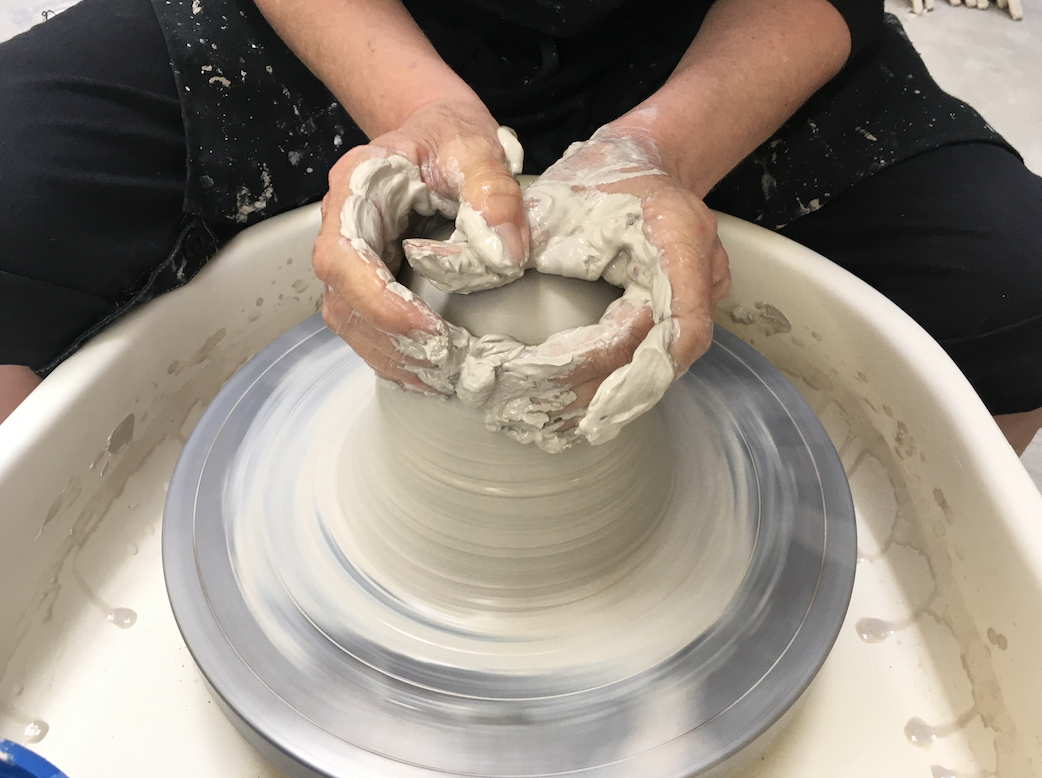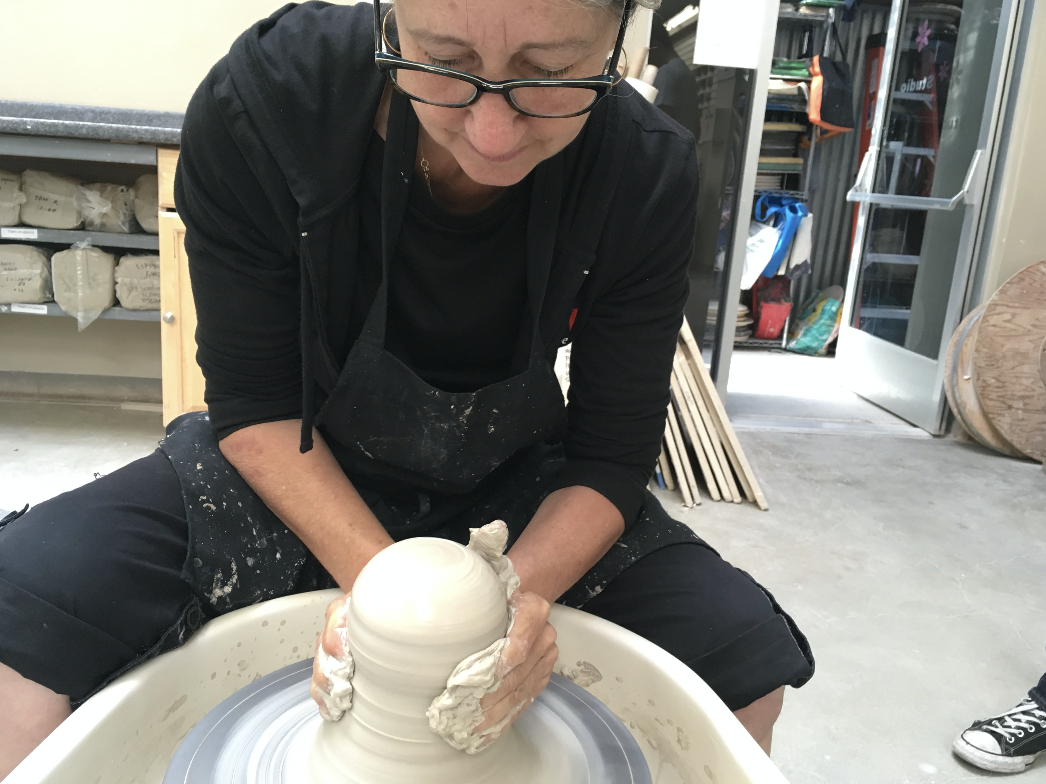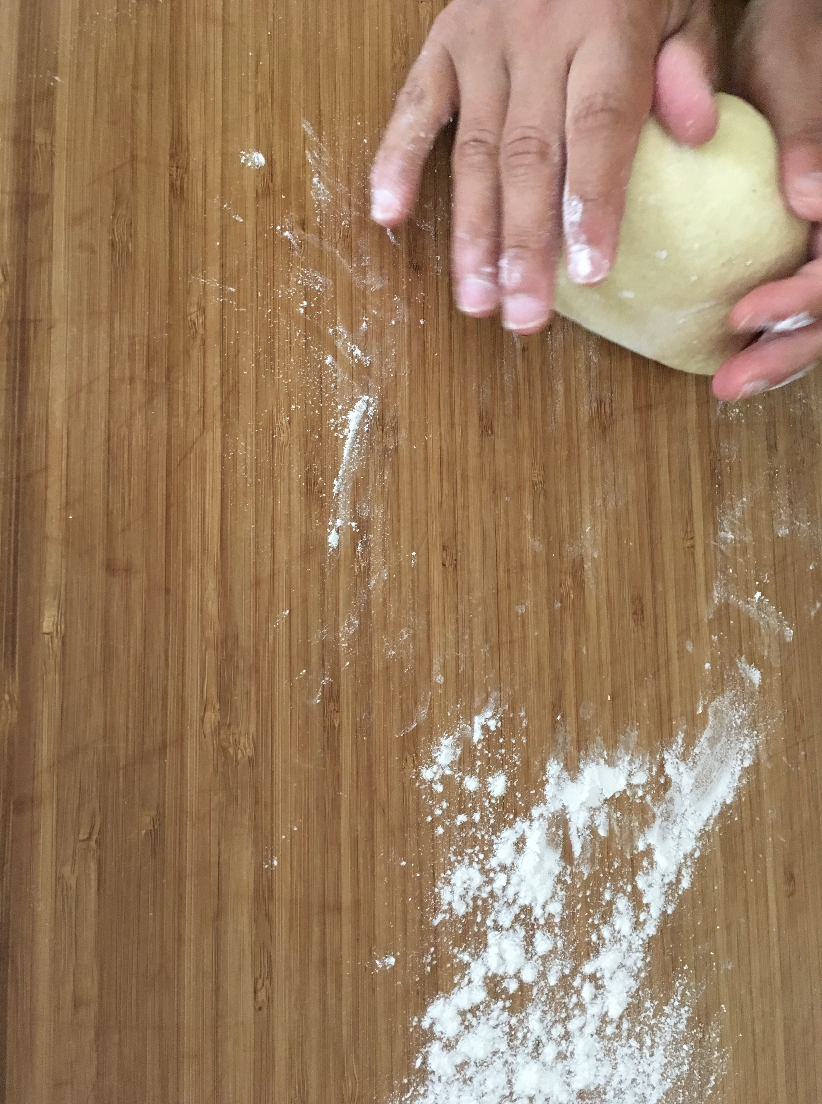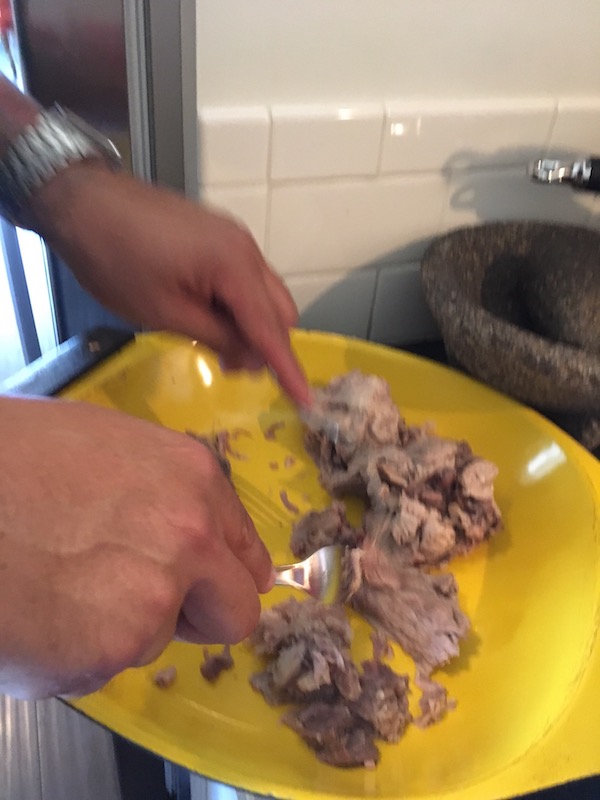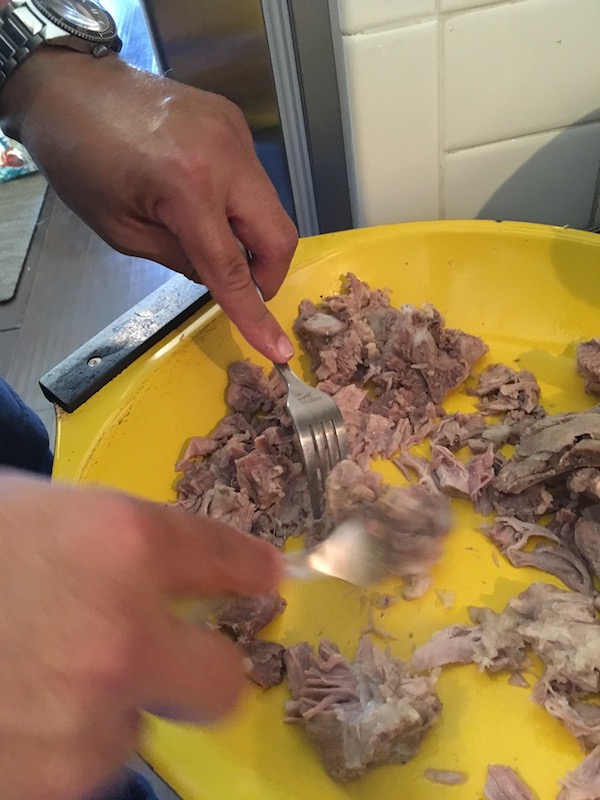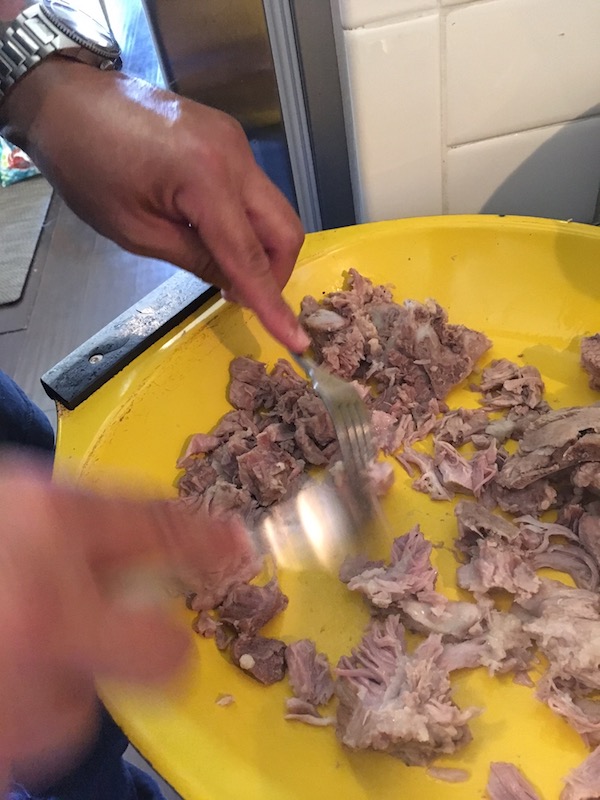As an avid reader of food writers, I place Bill Buford’s book Heat at the top of my list of informative, insightful and sometimes hysterically funny reads. Within the nesting doll stories about the restaurant, Babbo, his experience as an apprentice line cook and Italian food and its future lies my favorite anecdote. During a stint in a tiny restaurant in Panzano, Italy, where he was charged with stirring the ragu for eight hours, Bill worried a lot about dumping the hard-won sauce on the floor, about his very long apron catching on fire as the pot was suspended from a gas ring on the floor and of course disappointing his chef. The ring of fire, the slow cooking ragu, the apron locked around his waist by a tight knot and his desire to prove himself. And then the apron does catch on fire--described as an inferno—and he and the chef Dario wrestle mightily to untie its strings.
Illustration by Simone Rein
I remembered this story differently as an example of the meditative possibilities of cooking; its repetition of movement without encumbrance of typically racing thoughts and a desire for the “efficiencies” of multi-tasking. What I now understand in re-reading Bill’s story, is that his mind was racing so much so, that he did not realize that he was literally on fire. Rather than destroying my thesis--that the repetition of handwork, the simplest of tools, the discipline to create internal quiet and the external demands of something that will not be rushed are actually akin to the precepts of meditation--I am feeling even more certain.
My way to calm down has little to do with physical stillness. I make jam, and it is now high season for the seemingly endless repetition of cutting fruit into smallish pieces, macerating it in sugar and lemon juice and cooking until the alchemy occurs –gel point!
Pasqual and his Santa Rosa plums at the Pasadena farmers market
There is a certain irony to today’s post in that the food offerings are all slow-mo cooking requiring extended time with a stove top or oven.
But the season’s yield of fruit just keeps coming with encouraging and sometimes desperate little messages from friends, “I have 1,000 apricots, really! Is it time to make jam?” “We have more Rangpur limes. I hate to see them wasted.”
There is the rare opportunity of stumbling upon Pasqual at the Saturday farmers market selling the impossible to find Santa Rosa plums, many bruised and thus perfect for jam. I cleaned him out and promised him a jar. And there are my memories of Southeast Asia where we ate food that matched the day’s scorching heat as sweating was a part of cooling.
There is another irony in that the perception of food making, a deeply centering activity for me and most serous cooks, has been hijacked by media as intense, competitive and requiring supernatural speed to the finish line.
So here we go…a slow down for our overheated times.
I wondered if anyone else found inner quiet through the rhythm of activity instead of physical stillness. Here from some of my hyper-productive friends is a beautiful secret--they are actually able to find the most precious of quietness through their hands, their senses and extended times alone. The physical beauty of strawberries, of almost purple, dried hominy for blue corn masa, taking joy in a beautiful knife and its precision when chopping, the scent of pozole cooking slowly can win the battle between a distracted mind and a centered body.
Blue corn and blue corn masa from El Mercado in Boyle Heights.
My favorite very hard working knife.
Mario Rodriguez' pozole. Photo by Ann Cutting.
Some of the most effective worker bees are so, because they enter the zone seemingly effortlessly. What I find truly delightful as a person who has waded into and stayed in the deepest end of the arts pond and am now doing the same with food, is that there are so many similarities between cooks/chefs and artists, especially when they enter what Mihaly Csikszentmihalyi describes as flow.
First Observation:
After speaking with even the busiest chefs and artists, I realize that every single one of them does something essential for their souls and their creative spirits. They find time to be alone.
Sumi Chang of Europane Bakery with one of her favorite baking tools, an offset spatula.
Sumi arrives at her bakery by two in the morning for the quiet that allows her to stop thinking. “No one is around. I am just kind of focused and nothing bothers me…whether I have employee problems, or whatever at that moment. When I focus, I don’t think about them, I think about taste, flavors and textures. I lose track of time.”
Second Observation:
In the case of serious cooks and chefs, there is a reverence for the simplest of tools, which act as an extension of their hand, body, history, palate and spirit: a simple spoon, a knife, a 70-year old mortar and pestle (molcajete) passed down from grandmother to mother, a rolling pin. For some, there is almost a superstitious belief in the tool’s essential role in assuring their proficiency, much like a baseball player’s special bat.
Grant Yegiazaryan of Su-Beoreg and Monta Factory rolling the dough that frames cheese and herbs for his wife Evelina’s beoreg, a family recipe. The rolling pin, described as irreplaceable, is an extension of his arms. “No other rolling pin will make this dough.” Photos by Ann Cutting.
Mario Rodriguez holding his mother’s molcajete, passed down from his grandmother. The patina created by traces of ground spice is a part of its beauty. Photo by Ann Cutting.
Steve Brown, executive chef and former teacher at the New School for Cooking and his special spoon with his name engraved on the handle, a gift from a sous chef.
Third Observation
Chance favors the prepared mind.
Louis Pasteur
In the case of artists and cooks, chance favors an attentive spirit – resilient, observant, trusting of senses and understanding the dialectic between intent and awareness of possibility.
Ann Cutting leading and being led in the formation of a stoneware bowl. As a researcher, a photographer, a teacher and ceramicist, she, too, describes being unaware of time and ceding control by allowing for surprise within four exacting disciplines.
The bringing of the clay into a spinning, unwobbling pivot, which will then be 'free to take innumerable shapes as potter and clay press against each other. The firm, tender, sensitive pressure which yields as much as it asserts. It is like a handclasp between two living hands, receiving the greeting at the very moment that they give it. It is this speech between the hand and the clay that makes me think of dialogue. And it is a language far more interesting than the spoken vocabulary which tries to describe it, for it is spoken not by the tongue and lips but by the whole body, by the whole person, speaking and listening. And with listening too, it seems to me, it is not the ear that hear.It is not the physical organ that performs that act of inner receptivity.
Mary Caroline Richards from Centering, in Pottery Poetry and the Person
Francesca Mallus, teacher and chef, kneading pasta dough.
Fourth Observation
The confluence of time standing still, of being led by senses as well as mind, of quietness can change our perception of experience.
For Mario, the molcajete is a physical link to a grandmother long dead. For Sumi, the memory of the scent of roasting chiles at the Santa Fe farmer’s market is the identifier rather than a calendar for the fall season. And for Dennis Keeley, friend and photographer, his apricot jam is a link to the memory of its making.
Photo by Dennis Keeley
“So… I can’t even begin to express how much this day has meant to me. To have real friends that can talk, laugh, teach, make mistakes, work together, create, transform, process and just be a little more human is nothing short of a miracle in these difficult and complex times. It is so spiritually healing to be able to produce something of such exquisite beauty from a place that most people just call the backyard. It is a great reminder that special beauty does begin at home, but is not limited to just your own home. I won’t soon forget what we made in your kitchen, how we made it, and every time I put apricot jam on bread, I know I won’t just be thinking back to this day, but it will be a flood of all these incredible feelings into that moment…”
To encourage your own experiences with slowing down, I offer Mario Rodriguez’ Pozole, Stone Fruit Jam for plums and apricots and a take on Bill Buford’s Very Slow Cooked Polenta.













